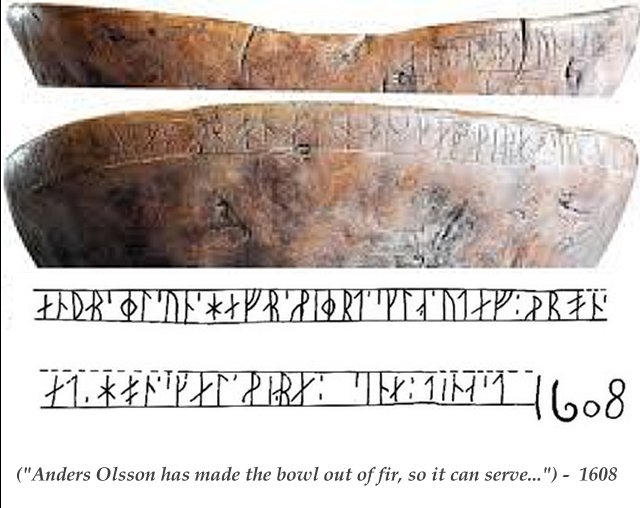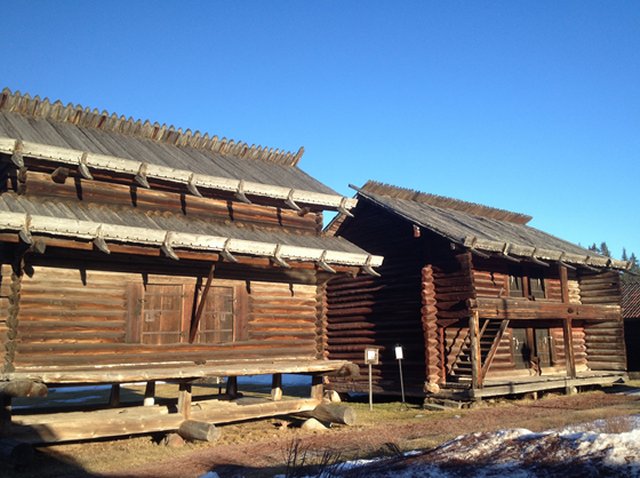Preserve Elfdalian: Sweden’s Secret Forest Language From The Viking Era
A. Sutherland - AncientPages.com - Elfdalian (in Swedish: Älvdalska) is a very ancient relative of Swedish (maybe even more 'Swedish' than it is spoken today).
Some call it a dialect, but most linguists agree it's more complicated than that. The language has been spoken in northwestern Dalarna since the Viking era, almost as ancient Swedish as anything else.
In this remote part of Sweden, people used runes until just a hundred years ago. However, most people associate runes with the Viking age. Still, in Älvdalen in western Sweden, the local population continued to use runes for centuries after the rest of Scandinavia had abandoned the ancient written language.
Hidden deep in the Swedish forests, the runes were allowed to live on until the early 20th century, just as the inhabitants retained their exceptional language Elfdalian, considered a veritable treasure chest for Scandinavian linguists.
"Älvdalen really is something very special. Firstly, because they speak a unique old Norse tongue and also because they used runes until a hundred years ago. It's absolutely fascinating," says Michael Lerche Nielsen, an assistant professor at the Department of Nordic Research at the University of Copenhagen.
The runic script was the dominant written language in Denmark and the rest of Scandinavia until the advent of Christianity in the ninth and tenth centuries introduced the Latin alphabet.
By the 15th century, the Latin alphabet had almost wiped out the use of runes – but not in Älvdalen.
Here, the Swedish linguist Henrik Rosenkvist recently saw a letter dated 1906 written partly in runes.
"The runes we see in Älvdalen are probably the most recent use of the script we know of. Runes otherwise died out in the Middle Ages, so their use in recent times is exceptional," says Rosenkvist who speaks and studies the unique language spoken in Älvdalen.
The runes of Älvdalen ('dalrunerne') are reminiscent of those used on runes stones in Denmark but there are a number of differences. Dalrunerne developed over time, influenced partially by the Latin alphabet. Here are the runes as they looked in the period leading up to the 20th century. (Illustration: Tasnu Arakun/Wikimedia Commons)
According to Nielsen, the runes in Älvdalen were most commonly found on houses and inscribed in furniture.
"The use of runes in Scandinavia gradually ceased during the 15th century. There are the odd areas of Gotland in Sweden and in Iceland where the rune tradition survived until the 17th century, but in Älvdalen, their use was widespread until the early 20th century," he says.
Bilingual road signs in Älvdalen parish, Sweden, in Swedish and Övdalian. Image credit: Lundgren8 - CC BY-SA 4.0 DEED
People in Älvdalen kept on using runes after the ancient script had been abandoned by the rest of the nation.
In addition, they were also engraved into' message blades' which were sticks of wood circulated among the farms in the area.
The landscape surrounding Älvdalen effectively cuts the community off from the rest of Sweden through mountains, forests, and lakes.
It was precisely the area's isolation from the rest of the country that lies behind the survival of the runes and the unique language -- while the rest of the country was flooded by the Latin alphabet, Germanic words, and modern Rikssvensk.
Rune inscription from 1635 - the Swedish province Dalarna. Photo credit: wikipedia
"Älvdalen lies extremely deep within the Swedish forests and mountains. You can get there by boat up the river, Dalälven -- a journey of more than 100 kilometers -- and getting there and back used to be quite an expedition.
So people in the area weren't particularly mobile and were able to preserve this very special culture, considered in Sweden to be extremely traditional and old fashioned," says Nielsen.
People in Älvdalen are a little conservative -- in a good way. They kept themselves very much to themselves," says Rosenkvist.
Image credit : Dalmålsakademin
"Another important reason is that sending your children to school wasn't obligatory in Sweden. Until the mid-19th century, many children didn't attend school, and until then, people simply kept on using the runes as their written language. When they started going to school, however, they only ever used the Latin alphabet and the use of runes gradually died out," he says.
Written by – A. Sutherland - AncientPages.com Senior Staff Writer
Updated on January 30, 2024
Copyright © AncientPages.com All rights reserved. This material may not be published, broadcast, rewritten or redistributed in whole or part without the express written permission of AncientPages.com
Expand for referencesMore From Ancient Pages
-
 Pamola: Mighty Thunderbird In Myths Of Penobscot People Of Maine
Featured Stories | Apr 25, 2019
Pamola: Mighty Thunderbird In Myths Of Penobscot People Of Maine
Featured Stories | Apr 25, 2019 -
 Genetic Evidence Reveals: Chachapoyas “Cloud People” Resistant To Inca Rule
Archaeology | Dec 14, 2017
Genetic Evidence Reveals: Chachapoyas “Cloud People” Resistant To Inca Rule
Archaeology | Dec 14, 2017 -
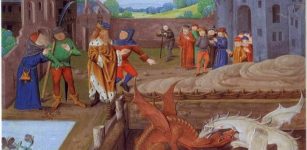 Magical Dinas Emrys – Battle Of The Dragons And Merlin’s Hidden Treasure
Featured Stories | May 21, 2019
Magical Dinas Emrys – Battle Of The Dragons And Merlin’s Hidden Treasure
Featured Stories | May 21, 2019 -
 Mysterious Disappearance Of King Aegeus Of Athens After His Wedding
Featured Stories | Aug 1, 2022
Mysterious Disappearance Of King Aegeus Of Athens After His Wedding
Featured Stories | Aug 1, 2022 -
 Two Elite Burial Chambers Dated To Middle Kingdom Uncovered In Beni Hassan Necropolis, El-Minya, Egypt
Archaeology | Aug 6, 2018
Two Elite Burial Chambers Dated To Middle Kingdom Uncovered In Beni Hassan Necropolis, El-Minya, Egypt
Archaeology | Aug 6, 2018 -
 Early Humans Reached Northwest Europe 45,000 Years Ago – New Research Shows
Human Beginnings | Jan 31, 2024
Early Humans Reached Northwest Europe 45,000 Years Ago – New Research Shows
Human Beginnings | Jan 31, 2024 -
 Lugh – Mighty God Of Light, Sun And Crafts In Celtic Beliefs
Celtic Mythology | Apr 30, 2018
Lugh – Mighty God Of Light, Sun And Crafts In Celtic Beliefs
Celtic Mythology | Apr 30, 2018 -
 Astonishing Upper Paleolithic Camel Cave Painting Discovered In The Ural Mountains
Archaeology | Nov 28, 2017
Astonishing Upper Paleolithic Camel Cave Painting Discovered In The Ural Mountains
Archaeology | Nov 28, 2017 -
 Fossil Bones From The Largest Penguin That Ever Lived Unearthed In New Zealand
Fossils | Feb 10, 2023
Fossil Bones From The Largest Penguin That Ever Lived Unearthed In New Zealand
Fossils | Feb 10, 2023 -
 Mystery Of The Sandby Borg Massacre Deepens – Unexplained Disappearance Of Women
Featured Stories | Dec 5, 2020
Mystery Of The Sandby Borg Massacre Deepens – Unexplained Disappearance Of Women
Featured Stories | Dec 5, 2020 -
 Why Was Alexander A Great Military Genius?
Ancient History Facts | Oct 23, 2018
Why Was Alexander A Great Military Genius?
Ancient History Facts | Oct 23, 2018 -
 Why Do Some Men Think Often About The Roman Empire?
News | Oct 4, 2023
Why Do Some Men Think Often About The Roman Empire?
News | Oct 4, 2023 -
 Ancient Greeks Regret Inventing The Theater – But Why?
Ancient History Facts | Jul 26, 2018
Ancient Greeks Regret Inventing The Theater – But Why?
Ancient History Facts | Jul 26, 2018 -
 Riddle Of The Hanging Gardens Of Babylon – Ancient Place Still Shrouded In Mystery – Part 1
Featured Stories | Jun 7, 2019
Riddle Of The Hanging Gardens Of Babylon – Ancient Place Still Shrouded In Mystery – Part 1
Featured Stories | Jun 7, 2019 -
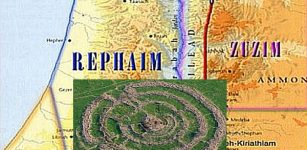 ‘Wheel Of Giants’: Mysterious Complex Of Circles – Prehistoric ‘Stonehenge’ Monument In The Middle East
Featured Stories | Mar 29, 2019
‘Wheel Of Giants’: Mysterious Complex Of Circles – Prehistoric ‘Stonehenge’ Monument In The Middle East
Featured Stories | Mar 29, 2019 -
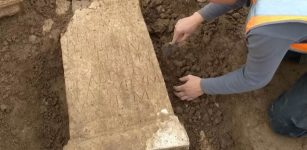 Amazing Discovery Of Ancient Roman Temple In The Netherlands Hailed As An Extraordinary Archaeological Find
Archaeology | Jun 20, 2022
Amazing Discovery Of Ancient Roman Temple In The Netherlands Hailed As An Extraordinary Archaeological Find
Archaeology | Jun 20, 2022 -
 Neanderthal Genes Influence Your Mood And Much More – Study Shows
Archaeology | Oct 6, 2017
Neanderthal Genes Influence Your Mood And Much More – Study Shows
Archaeology | Oct 6, 2017 -
 Mummy Of Unidentified Official Discovered In 3,500-Year-Old Tomb In Luxor, Egypt
Archaeology | Dec 11, 2017
Mummy Of Unidentified Official Discovered In 3,500-Year-Old Tomb In Luxor, Egypt
Archaeology | Dec 11, 2017 -
 Mysterious Mustatils- Giant 7,000-Year-Old Stone Monuments In Saudi Arabia Baffle Scientists
Archaeology | Aug 19, 2020
Mysterious Mustatils- Giant 7,000-Year-Old Stone Monuments In Saudi Arabia Baffle Scientists
Archaeology | Aug 19, 2020 -
 Catherine Of Valois – Scandalous Queen Who Caused Drama Even After Her Death
Featured Stories | Feb 4, 2019
Catherine Of Valois – Scandalous Queen Who Caused Drama Even After Her Death
Featured Stories | Feb 4, 2019



